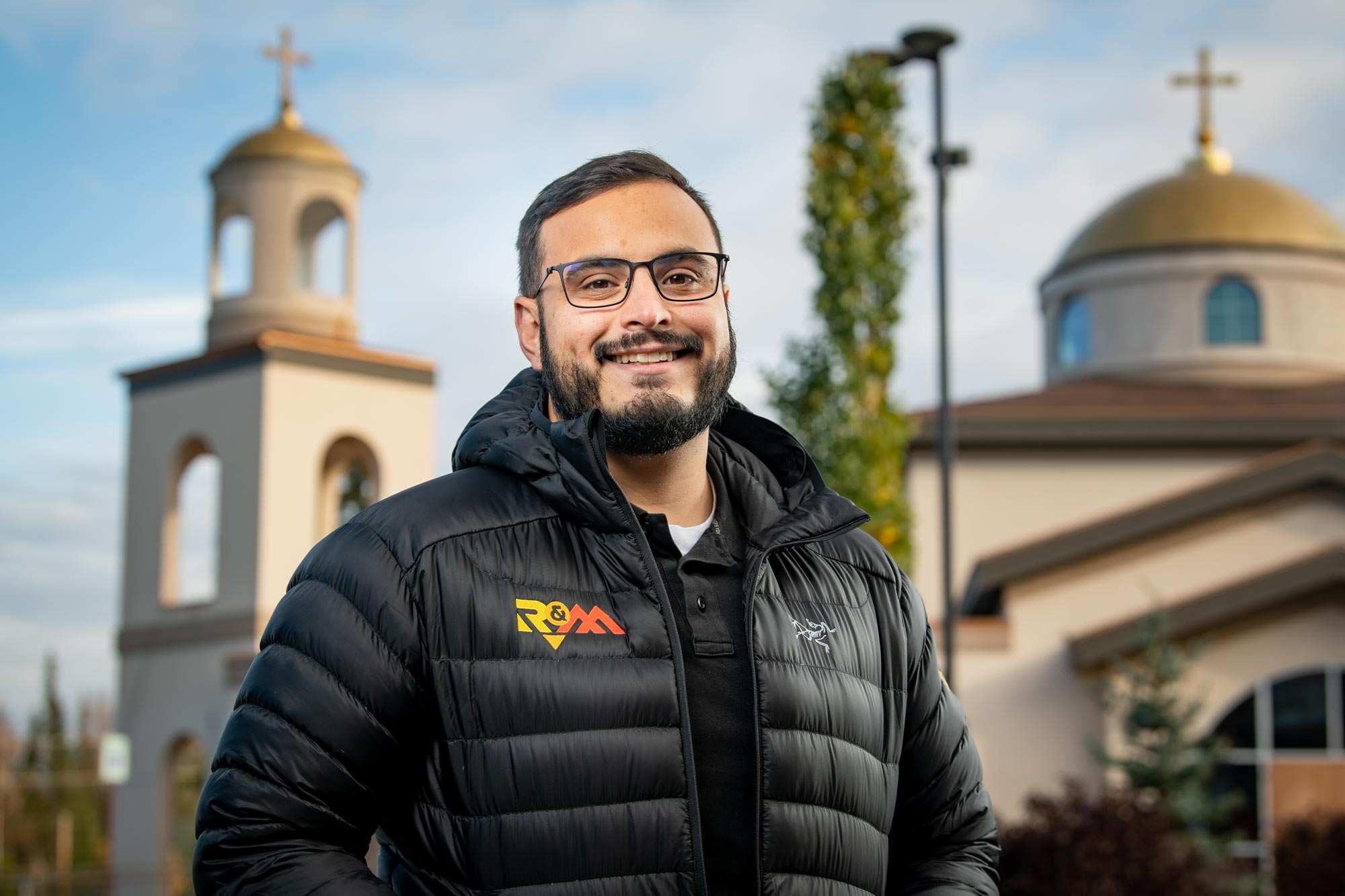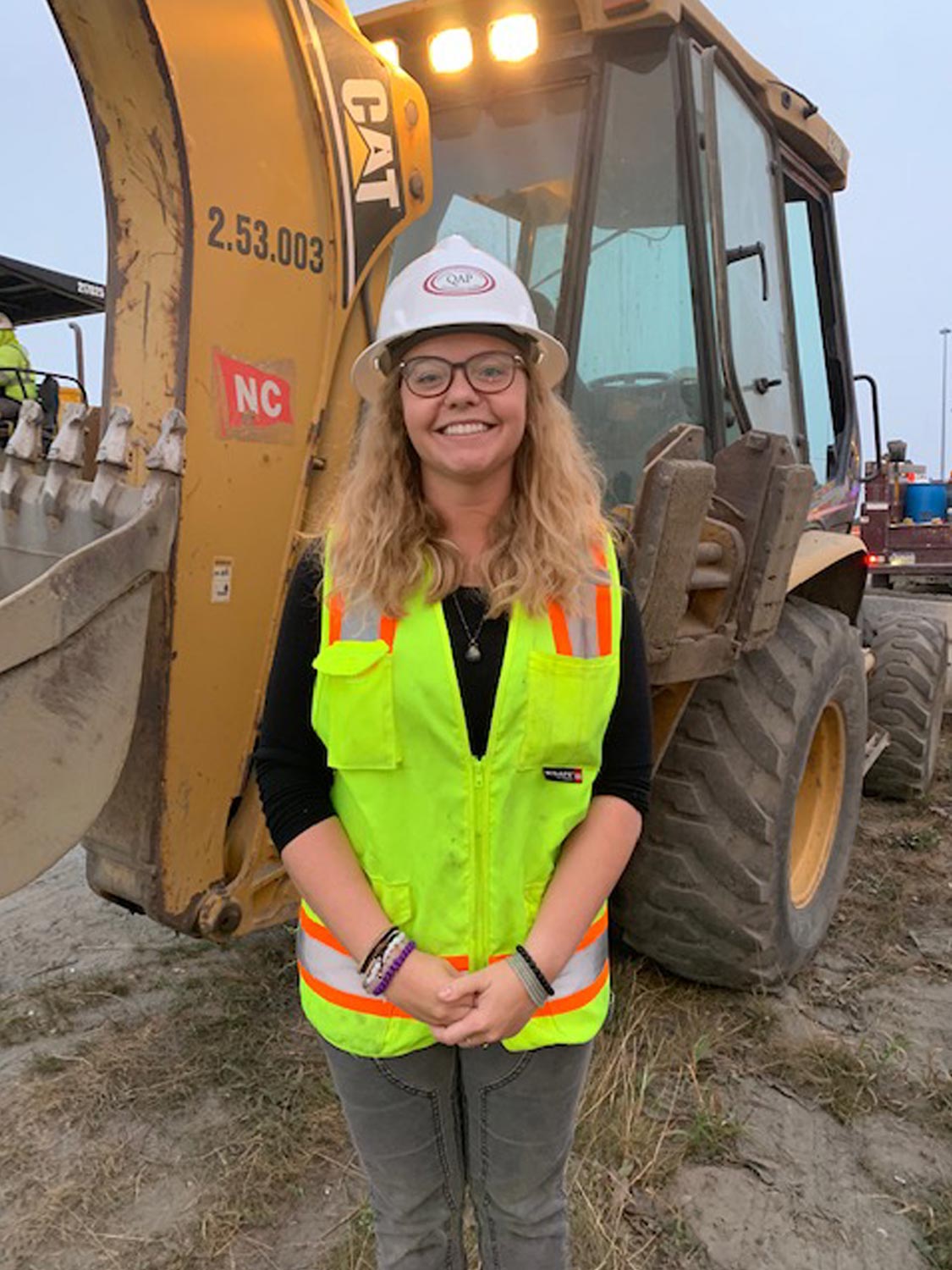READY
FOR
THE
MAIN
EVENT
According to a 2018 survey from the Association of American Colleges and Universities, 75% of hiring managers polled believe that a college education is an essential quality in a candidate.
Conversely, a 2020 survey from the U.S. Chamber of Commerce Foundation found that 74% of hiring managers polled agree that demonstrable skills are more important in a candidate.
Hiring managers reviewing a resume from a UAA grad will undoubtedly notice the best of both worlds. Many of our academic programs — both in long-standing and emerging fields — offer skills-based curricula built by consulting with industry professionals and community partners.
Accounting: Strength in numbers
“They love it,” said Stasia Straley, UAA professor of accounting. “Employers who hire both A.A.S. and B.B.A. accounting students say it’s one of the most valuable classes. They say they can tell students who have taken that class from students who haven’t.”
Of course, to earn the true mark of accounting legitimacy — the title of certified public accountant — students will need to have the accounting B.B.A., which is built to be a seamless transition from the A.A.S. program.
“The bachelor’s meets the requirements for students to be able to go and work anywhere. But I think the associate program provides a much deeper knowledge and fits better with Alaska,” said Evelyna Caldwell, A.A.S. Accounting ’12, B.B.A. Accounting ’15. “The people who do both come out of there as a rock star.”
Caldwell owns an accounting firm, Balanced CPAs, and is a perfect embodiment of how accounting alumni stay connected with their alma mater. Not only does she provide on-the-job experience by hiring students to work at her firm, but Caldwell is also an active mentor and participant at UAA Accounting Club events, which is one of the most active clubs on campus.
“I’m involved because I want to support students on their journey as an accountant,” said Caldwell. “And I want to support the Accounting Club because I do feel I owe where I’m at to the club and teachers at UAA. So whenever they call me to speak to a class, I’m happy to do it.”
Civil engineering: Training ground
“This is the core of our job,” said Osama Abaza, UAA professor of civil engineering. “We need to test students to see their performance and we need to bring project managers to class and communicate with them. We don’t want to stay on the theoretical side when the need in the community is totally different.”
Civil engineering’s capstone class operates like an engineering firm. Rather than register for a class, students apply for a position, complete with resume and interview. In the first semester, they’re presented with projects from real agencies and nonprofits, choose one based on their interests, and spend the remainder working in groups to create a proposal and schedule for how to approach the assignment, ending with a presentation to Abaza and the client.

“Even though I loved structural engineering and the design aspect of it, I had no idea how to identify the problems,” said Ruiz, who now works as a staff engineer at R&M Consultants. “That’s the kind of stuff that comes with experience. It’s rewarding to have other people respect your knowledge. I came into the workforce with prior knowledge of what was expected of me because of the senior design project.”
According to Abaza, many graduates are offered jobs based solely on their senior projects as a result of employers seeing what graduates are capable of and already working with them on those projects, likening it to a semester-long training program.
“The engagement with our community is a crucial part of what we do as faculty,” said Abaza. “When we’ve needed our community, they’ve jumped to help us through the years.”
Construction management: What and who you know
“We have a strong advisory group of 20 to 30 leaders from the local industry who meet us biannually and we ask the question if this is a value to you when they come out of UAA, and sometimes the answers are surprising,” said Darryl Jordan, UAA assistant professor of construction management. “We’re hearing directly from the people who are hiring these folks what technical skills they want the graduates to have.”
Jordan describes construction management as one of the more unique majors, as many of his students are older and returning to school due to the field requiring a four-year degree. While returning to college can be intimidating to anyone who’s spent considerable time away, Jordan says it’s always worth it upon program completion.
“Generally the field didn’t exist,” said Jordan. “Over time the field evolved to the point where people understand the value in having management in construction. I tell students, why would somebody pay you $100 thousand a year? Because they know if you’re a good construction manager on a $100 million job, you might save them some million dollars off the cost.”

“With construction management, it’s a little different. There’s never one way to do the job and every company is different and has their own ways of doing things,” said Senter. “But in terms of preparing you for the information that you’re walking into and what you’re looking for, I’m really happy with the program and what we’ve learned and there’s a lot of opportunities with it.”
Nursing: If you build it, they will come
Typically, nursing programs at rural campuses limit how many students can enroll, resulting in fewer graduates overall. For instance, the Bethel campus enrolls only eight students each year, which can force prospective students to move in order to pursue an education, which Joelene Geerhart, A.A.S. Dental Assisting ’05, considered. Thankfully, she was able to stay in Bethel, starting the nursing A.A.S. program in October 2019.
“I have my home here and my children, so it’s just much easier to go to school here,” said Geerhart. “If I went to school in Anchorage or outside of Alaska, I’d have to uproot my kids, sell my house, sell my vehicles and help my kids get used to living in a new place. So it just made sense to stay here.”
Additionally, the slower rate of graduating nurses in rural communities may require that medical professionals be brought in from outside Alaska, which can present its own challenges.
“If you hire somebody who lives in this area, they’re going to stay here,” said Geerhart. “Everybody comes to Bethel from the villages to get seen at the hospital, and if you know the language and the culture, you can help them and they’ll feel more comfortable, especially the little kids and our elders.”
Students aren’t the only ones benefiting, but faculty as well. Thanks to the Premera gift, the expanded class sizes will be paired with additional resources, such as labs and beds. For Rachelle White, UAA term instructor of nursing in Bethel, who taught classes with access to only two hospital beds, this means she will focus more on student success.
“I have the opportunity to invest in their lives for two years. I watch them grow from brand new baby nurses to graduate nurses and I’m able to build them up and encourage them,” said White. “The other beauty here is the hospitals already see the students as their students. They’re excited to see the students on the units and really invest in them.”
Fast Track Career Certificates: Quick turnaround
Led by Provost Denise Runge at the request of Chancellor Cathy Sandeen, university leaders gathered feedback from industry professionals, community partners, and state and local officials regarding employment needs to develop the certificate programs based on current and emerging economic trends.
“UAA evaluated current data on job openings, as well as longer-term information about employment trends pre-COVID, to determine areas where hiring is most likely to continue both during and after the pandemic,” said Runge. “The focus of the effort was to design short-term programs that could lead to immediate employment.”
The Alaska Department of Labor and Workforce Development reports Alaska’s job count was down 12.2% in May 2020 from the same month last year, a loss of over 42,000 jobs. Some jobs have been impossible to perform during the pandemic due to restrictions on in-person staffing. Demand for other services dwindled as individuals limited their activities only to those deemed essential, such as purchasing groceries and household supplies.
Even in the midst of the pandemic, new job opportunities have unexpectedly emerged, particularly in health care. Other jobs, such as those in IT, have remained in demand. Hiring increases in other sectors are expected as organizations across the state continue to reopen.
The new certificates focus on areas like petroleum production, bookkeeping, entrepreneurship, construction, infant and toddler development, automotive repair and maintenance, web engineering and more. The fields were chosen based on careers anticipated to remain in demand in Alaska with average salaries ranging from $25,000 to $62,000.
Notably, the new certificates were developed using current resources, meaning they do not cost the university additional funds.
“At a time when the university’s budget has seen several years of decline, it was important that we utilize only existing courses and faculty,” said Runge. “This required faculty to take an interdisciplinary approach, which is ultimately an extremely efficient way to create new programs.”

Contact tracing: Rapid response
To fill those gaps, COH began offering contact tracing certification through a collaboration with the Alaska Department of Health and Social Services’ Division of Public Health, made possible by federal funding provided by the Coronavirus Aid, Relief and Economic Security (CARES) Act.
“When there is a pandemic, it needs to be all hands on deck,” said Kristin Bogue, UAA assistant professor of health sciences. “Unfortunately, the State of Alaska Division of Public Health has taken budget hits over the last several years. With that, we did not have the workforce needed to battle the pandemic that hit our state. So they’re leaning on who else has similar expertise, and that really comes to UAA.”
UAA’s curriculum consists of three sessions taking an average of 14 to 16 hours to complete. The training provides a crash course on U.S. and Alaska public health systems, basics of infectious diseases and the principles of contact tracing. An overview of the investigative process includes how contact tracing teams identify and reach out to potential cases and close contacts and monitor those in isolation or quarantine. Additional training is available in supervisory management for those who may serve as team captains.
Upon completion, newly certified contact tracers will be assigned a tier based on performance, experience and preferences. The tier dictates what roles a person can occupy in the process. Those who complete the curriculum may be hired as temporary employees of UAA’s contact tracing surge workforce supporting the State of Alaska’s contact tracing efforts.
In the short term, UAA’s contact tracing certification could be considered an immediate path to employment for those whose careers were impacted by the pandemic. Looking ahead, however, the training could be viewed as laying the groundwork for a potential career in the increasingly invaluable public health field.
“Can you be a contact tracer forever? Probably not. We’re not going to need this large of a contact tracer workforce come the end of this pandemic,” said Gloria Burnett, director of UAA’s Alaska Center for Rural Health and Health Workforce. “But I think it could be a pathway for people if they get a taste of public health and want to explore opportunities in the future.”